 |
submitted by /u/wiselookouts [link] [comments] |
Blog
-
Share 5 of my cyber-concubine with you guys xD
-
What is Deep Learning?
“NEVER THINK THERE IS ANYTHING IMPOSSIBLE FOR THE SOUL. IT IS THE GREATEST HERESY TO THINK SO. IF THERE IS A SIN, THIS IS THE ONLY SIN; TO SAY THAT YOU ARE WEAK, OR OTHERS ARE WEAK”
– By Swami Vivekanand
Is Deep Learning now overtaking the Machine Learning algorithm?
Let us first know what is Machine Learning?
Machine Learning was coined by “ Arthur Samuel” in the year 1959. As we know to perform any Machine Learning algorithm we require a humongous amount of data and very high computation power. But at that time we are not able to generate or store that amount of data, additionally, the computer also doesn’t have enough computation power. So this technology started exhausting, but now this is not the case. Machine Learning is a subfield of Artificial Intelligence.
In the simplest term, we can say that training a machine on a various algorithm using the large dataset to take a decision like a human brain. Machine Learning uses a variety of algorithms but as the dataset complexity increases it’s model accuracy decreases. Hence Deep Learning comes into popularity.
Interesting Facts: One kg weight of DNA require to store World’s entire data.
Comparison between Artificial Intelligence and Machine Learning and Deep Learning as below.
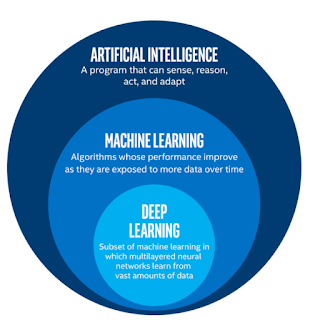
Deep Learning

Geoffrey Hinton was known as Godfather of Deep Learning. He published various papers on deep learning and done various research work in this field. He currently works for GoogleAI. I highly recommend you check out about him and read his research papers. The main concept of building deep learning technology is to mimic how the human brain operates (neural science) because the human brain it seemed to be a most powerful tool for learning, adapting skills and applying skills. If the computer can be copied that it can create wonders.
Famous Deep Learning Networks.
- Artificial Neural Network
- Convolutional Neural Network
Artificial Neural Network
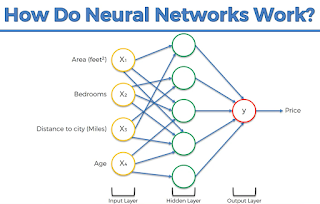
It has an input layer, a hidden layer, and an output layer. As in neuron dendrites act as receiver of signal and axon act as a transmitter of the signal. In deep neural network input layers act as dendrites i.e it takes the various data input, hidden layer act as various other neurons which transmits the data in the network and after various computation (i.e. by applying various activation function) in the hidden layer it produces output at the output layer using backpropagation.
We can say that Artificial Neural Network is the same as the basic machine learning algorithm, but here we add one additional thing, i.e. hidden layers. But because of that hidden layer, accuracy increases to a great extent.
Convolutional Neural Network
It is mostly used for images or video as data inputs. We can define CNN i.e. it is a class of deep neural networks, most commonly applied to analyze visual imagery. It uses minimal preprocessing hence it gives maximum accuracy than Machine Learning algorithms.
Convolutional Neural network consists of the various step before giving inputs layer.
- Convolution operation

After Applying all the above steps, CNN work same as Artificial Neural Network.
A short Video in Which Godfather of AI Geoffrey Hinton gives an overview of the Foundation of Deep Learning. Must Watch.
Originally published at https://knowledgeinai.blogspot.com on January 8, 2019.
What is Deep Learning? was originally published in Chatbots Life on Medium, where people are continuing the conversation by highlighting and responding to this story.
-
How Generative AI can Accelerate Your Application Modernization Journey
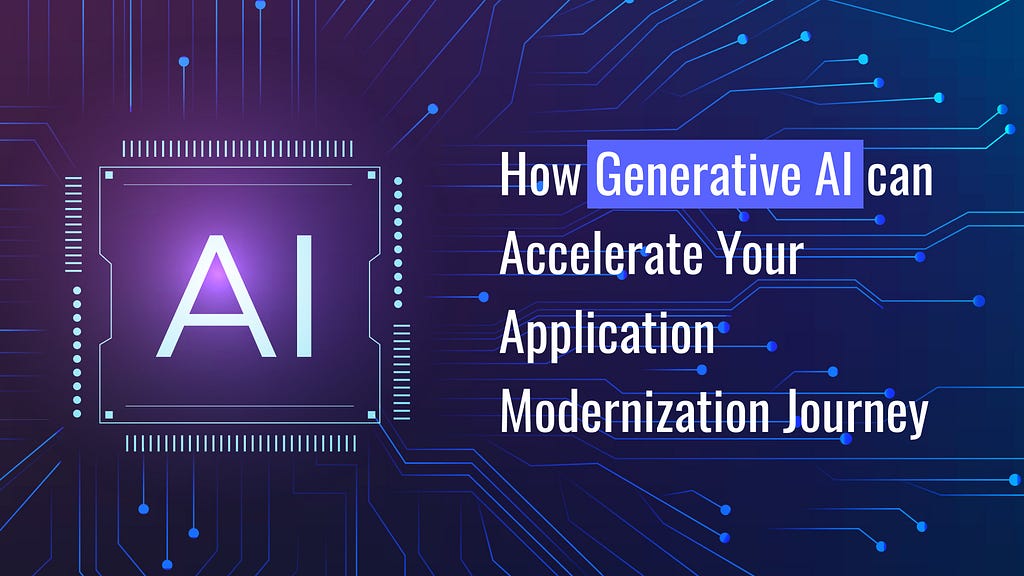
Once upon a time, there was no robotics in healthcare. The retail stores didn’t have any automated check-outs. Smart fintech apps could not offer personalized investment recommendations to their customers. Those were the times of legacy systems. Then along came artificial intelligence, IoT, data analytics, and cloud. Cybercriminals got smarter and developed more malicious ways to attack data centers. Customers started to get annoyed with complex sign-up requirements, disjointed buying journeys, and disorganized itineraries. Thus came the adventurous game of legacy application modernization. Application modernization services help focus on keeping up with customer experience demands while protecting the applications. But in the face of growing cyberattacks, unplanned downtimes, and compliance issues, the next modernization stage needs a power-up. Fortunately, we’ve reached the time when the stars are aligning themselves to welcome the arrival of generative AI!
Per the latest report by Market Research Future, the application modernization market is projected to grow up to USD 38.7 billion by 2032. This isn’t surprising if you consider that IT executives, CTOs, CIOs, and technology leaders are all anxious to keep the ball rolling in a market more dynamic than ever. If integrated mindfully and strategically, generative AI can help maintain this delicate balance between the all-over-the-map customer demands and long-term business continuity and security.
So, how do the players of modernization fight these three bosses with AI potion?
Why Modernization Needs a Respawn?
Enterprise application containers, such as Docker and Kubernetes, gained popularity for their ability to package applications and their dependencies into standardized units. They are known to provide a way to isolate applications from their underlying infrastructure, simplifying deployment and management tasks. However, managing containerized applications at scale can be complex, requiring specialized skills and tools. Additionally, traditional deployment practices may still involve manual steps, leading to slower release cycles and increased risk of errors. Let us understand these concerns through our three bosses — security, customer experience, and business continuity.
Security
Problems like breakout vulnerabilities or misconfigurations can easily turn containers into potential attack vectors. Deployment of insecure container images can also be exploited for malicious breaches and data leaks. Therefore, application modernization needs to evolve to secure the CI/CD pipelines with automated security checks, static and static code analysis, and vulnerability scanning.
Customer Experience
Challenges related to inept container management can lead to service downtimes, inconsistent performance, and unforeseen misconfigurations. Thus, even with modernization, businesses may not expect to deliver top-notch customer experience. It is imperative that the modernization strategies are mindful of shorter release cycles, frequent updates, and early issue detection and addressing.
Business Continuity
Even with all their promises of scalability and resilience, modern containerized platforms can lack proper monitoring measures, scheduling conflicts, and network disruptions. This can prolong the downtimes and directly hamper business continuity due to a lack of quick response and error-prone deployment.
Despite the concerns described above, application modernization continues to be the reliable next step thanks to significant opportunities for service improvement and business growth. This is why an ally like Gen-AI needs to step in to boost all that’s great about modernization.
Empowering the Modernization Quest
Adopting AI goes beyond mere keyword insertions on business websites. With the promise of personalization and customization, the technology can help with more than just creative content generation. It offers future-proofing, decision-making, competitive advantage, and much more. By integrating AI into modernization strategies, organizations can emerge triumphant against the three bosses. Here’s how the adventure will unfold.
Predictive Security Intelligence
Generative AI can automate various aspects of security checks, threat detection, and remediation. This automation accelerates the detection, response, and resolution of security issues, reducing manual effort, minimizing human error, and enhancing the overall security posture of software development processes. By continuously scanning code for vulnerabilities, analyzing patterns, and generating alerts for potential threats, it can minimize the risk of deploying insecure code into production. Here are some of it’s essential modernization enhancements in terms of security:
- Dynamic Threat Detection: AI can dynamically monitor CI/CD pipelines for suspicious activities or deviations from normal behavior that may indicate security threats. By analyzing real-time data, generative AI can detect and respond to emerging threats proactively, enhancing the overall security posture of the software development process.
- Predictive Analytics: Gen-AI can leverage predictive analytics to identify potential security risks based on historical data from CI/CD pipelines. By analyzing patterns and trends, AI can predict future security threats and recommend effective preventive measures to mitigate risks.
- Automated Remediation: Generative AI can automate the remediation of security vulnerabilities identified during the CI/CD process. By generating code patches or configuration changes automatically, AI accelerates the remediation process, reducing the time to resolution and minimizing the impact on business operations.
- Continuous Improvement: AI can contribute to the continuous improvement of security practices within CI/CD pipelines. By analyzing data on security incidents and outcomes, AI can identify areas for improvement, recommend best practices, and optimize security controls to enhance overall security posture and resilience.
Continuous Value Delivery
AI can enable organizations to be more agile in delivering features and updates to customers. This can reduce operational disruptions and allow businesses to respond quickly to customer feedback without struggling with downtime.
Faster Delivery of Features: Imagine the customers demanding a new feature on your application via channels like social media, Play Store feedback, or more. With AI, developers can work faster behind the scenes, and leverage the use of smart tools to improve and develop features more quickly. Instead of waiting for months, customers might get a cool new feature in just a few weeks.
Reliable Updates: With automated testing and deployment processes, generative AI can help test the updates thoroughly in less time before they are released into production. This means no annoying app crashes or performance failures.
Access to Latest Features: By delivering updates to production more frequently and reliably, AI can ensure that customers have access to the latest features and improvements. This enhances customer satisfaction and loyalty by providing them with a continuous stream of value-added updates.
Uninterrupted Business Operations
AI offers features like predictive maintenance, adaptive resource allocation, and autonomous decision-making. These can help proactively manage operations and anticipate any challenges, thereby ensuring uninterrupted business continuity and operational efficiency.
- Rapid and Reliable Deployments: AI can help businesses with rapid and reliable software deployments by automating testing and deployment processes. This ensures that updates are deployed consistently and efficiently, minimizing the risk of disruptions or downtime.
- Quick Rollback: In the event of failures or issues during deployment, Gen-AI can facilitate quick rollback to previous versions. This allows organizations to restore services promptly and minimize business disruptions, ensuring continuity of operations.
Conclusion
Every adventure comes with its challenges to face, rewards to win, and stories to tell. While saving the kingdoms of contemporary digital ecosystems, it is essential that our heroes of application modernization have all the help they need. Generative AI can prove to be the reliable power boost in this journey as, more than anything else, it can help business decision-makers translate their pain points directly into digital strategies. Therefore, the application modernization plans need to accommodate Gen-AI to ensure that the complex applications and platforms can keep up with the business needs of today and beyond.
How Generative AI can Accelerate Your Application Modernization Journey was originally published in Chatbots Life on Medium, where people are continuing the conversation by highlighting and responding to this story.
-
Created a new subreddit devoted to AI Programming and Engineering, come and check out r/AIDevHub
Hi, I created r/AIDevHub to serve as a a community where AI Devs, coders, engineers or anyone just curious about AI Development in general can come together to share ideas, resources and have thoughtful discussions about the future of AI Development.
submitted by /u/typhoon90
[link] [comments] -
Has there been Any Chatbot Which Offers NSFW Chat?
Need Suggestions
submitted by /u/longtimeblather6
[link] [comments] -
What is the more advance apps for a fintech company who want to create chatbot: Coze or Dift
I’m an AI Product Intern at a fintech company about savings. I was assigned for a research task about Coze and Dify and which one should I choose to develop the AI assistant for our customer. I’m quite confuse as I don’t see any noticeable different between these two apps. Can you help me identify pros and cons of these apps and which one should I choose to develop my chatbot
submitted by /u/Lilzahyungetbored
[link] [comments] -
How are you testing your AI chatbot?
AI chatbots majorly include some or all of the following components:
- Prompts & LLMs
- State machine
- Function calling
-
Rag
How are you testing your AI chatbots after making changes in any of the above components?
I couldn’t find a framework or dev tool to help in this. Have you built anything internally for testing?
submitted by /u/deeepak143
[link] [comments] -
AI on Air: Exploring GPT-4o
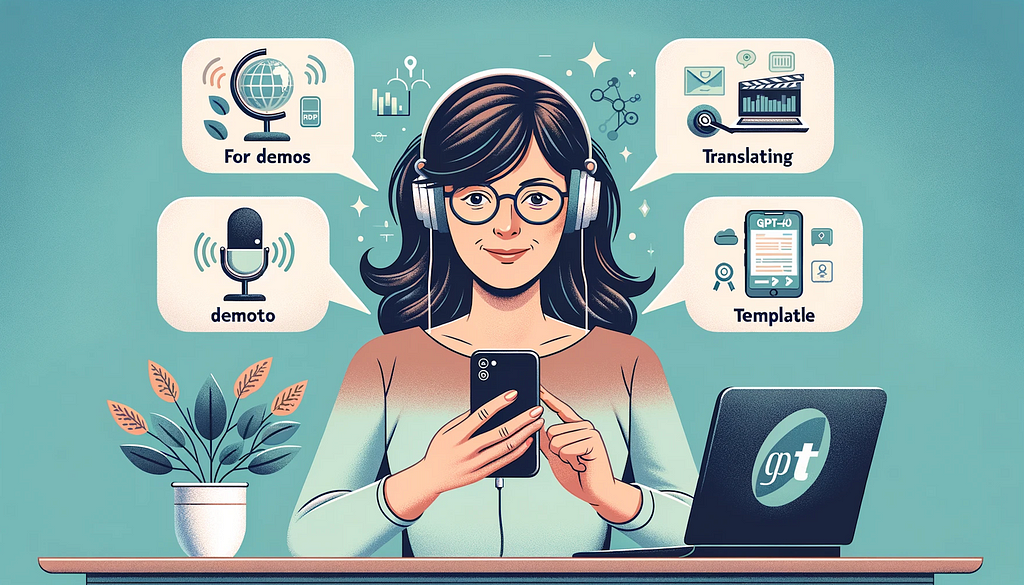
DALL-E illustration showcasing my audio demos and conversations with GPT-4o This week, OpenAI announced the release of GPT-4o, the latest iteration of its language model with new capabilities across multiple modalities. The “o” in GPT-4o stands for “omni,” highlighting its enhanced ability to reason in real-time across audio, vision, and text.
This makes it especially useful for those working with audio, allowing easy multilingual communication and improved audio analysis.
As a media technologist with years of experience in audio at KUNM FM, NPR News in Washington, and National Geographic, and currently leading AI trainings for newsrooms, I have explored GPT-4o’s potential through various practical applications.
This post delves into four real-world examples and discusses the benefits and drawbacks of using GPT-4o compared to traditional methods, including the environmental costs associated with AI usage.
Scenario 1: KUNM FM Audio Story
Drawing from my experience working at KUNM in Albuquerque, New Mexico, where there is a growing Hispanic community, I asked GPT-4o to translate a news story from English into Spanish and and then, for fun, into German.
The AI handled the task, demonstrating its ability to facilitate multilingual communication in real-time. This capability could be profound for media outlets aiming to reach a broader, more diverse audience.
Scenario 2: Helen, My Grandmother
In this scenario, I shared a recording of my late grandmother from 1958 and requested a translation into Persian. GPT-4o translated the content, preserving some of the emotional context. Although the accent wasn’t perfect on some words, it was still impressive.
This highlights GPT-4o’s potential in preserving and sharing oral histories and personal stories across different languages and cultures, which is especially relevant to my work in global heritage and cultural preservation.
Scenario 3: The Long Sought Podcast
For the third example, I played a podcast episode and asked GPT-4o to translate it into Spanish. The AI provided a summary and then translated a synthetic TTS voice segment into French.
This demonstrates GPT-4o’s versatility in handling various audio formats and content types, making it a new tool for podcasters looking to reach international audiences. My background in podcasting and audio storytelling underscores the importance of such a tool for expanding reach and accessibility.
Scenario 4: The Times of Karachi
In the final example, I pasted a news story from the Times of Karachi and asked GPT-4o to translate it into Urdu. The AI not only provided a translation but also offered a way to verify and improve its output through feedback from native speakers. I’ll be checking this Urdu translation with several Pakistani journalists and will offer feedback.
This collaborative approach ensures the quality and reliability of translations, crucial for maintaining journalistic integrity, especially when working with international partners, as I have done at NPR News.
Advantages of GPT-4o in the Media Industry:
- Efficiency and Speed: GPT-4o can process and translate content almost instantaneously, significantly reducing the time required for multicultural content creation.
- Multilingual Capabilities: As these translations become more reliable, GPT-4o can enable media outlets to reach a global audience, breaking down language barriers.
Drawbacks and Considerations:
- Quality Assurance: While GPT-4o claims to be highly accurate, it is not infallible. Human oversight is still necessary to ensure translations are contextually appropriate and culturally sensitive.
- Environmental Impact: The data centers powering AI models like GPT-4o consume significant energy and water resources for cooling. This environmental cost is a critical consideration for the sustainable use of AI technologies. It is essential for companies to adopt sustainable practices, such as using renewable energy sources and optimizing data center efficiency, to mitigate these impacts.
- Job Displacement: Automation may lead to job displacement in roles traditionally performed by human translators and content creators. However, it also creates opportunities for new roles focused on AI oversight and integration.
Open AI says GPT-4o has safety built-in by design and that it uses filtered training data and refined behavior to ensure safe outputs. They note that they have done extensive testing and received feedback from over 70 experts who helped identify and mitigate risks.
A Personal Note
As I navigate the intersection of technology and media, tools like GPT-4o cautiously remind me of the transformative potential we have at our fingertips. They open doors to new possibilities, not just for reaching global audiences but also for preserving and sharing the voices and stories that matter most to us.
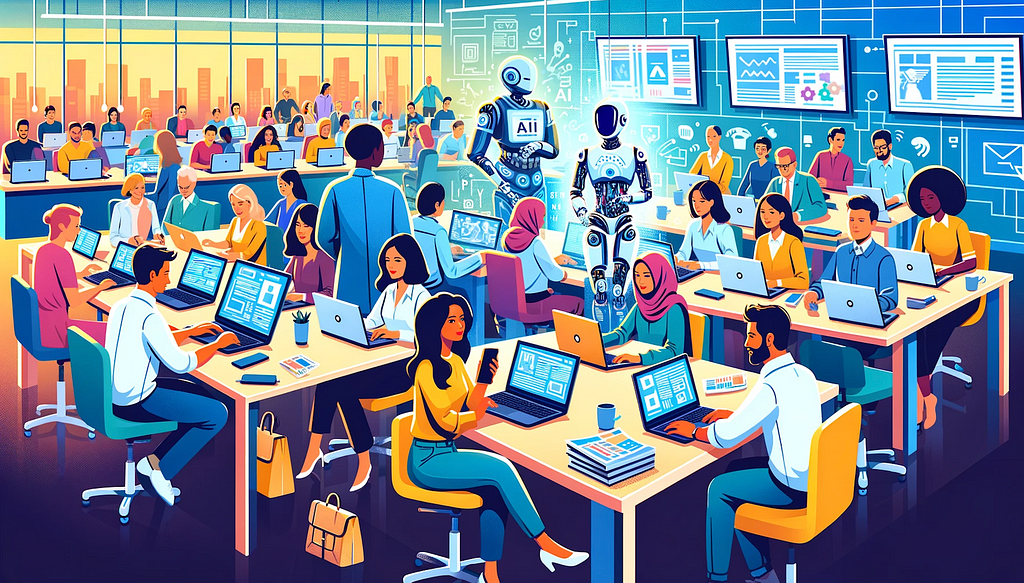
DALL-E illustrating TulipAI trainings with diverse journalists from around the world engaged in AI in the newsroom activities.
AI on Air: Exploring GPT-4o was originally published in Chatbots Life on Medium, where people are continuing the conversation by highlighting and responding to this story.
-
Any suggestions – which AI Chatbot is best For NSFW Chat ?
Need Suggestion
submitted by /u/longtimeblather6
[link] [comments]